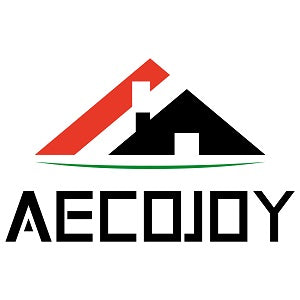Choosing between a large polycarbonate greenhouse and a glass greenhouse is a big decision for any gardener. Both materials have their strengths, but understanding how they perform in different areas can help you make the right choice. Whether you’re looking to start a small backyard project or invest in a large polycarbonate greenhouse, this guide will break down the key differences between these two popular options. Let’s dive in and explore which one is the better fit for your needs.
Light Transmission & Insulation: Polycarbonate vs Glass Greenhouse Performance
When it comes to growing healthy plants, light and temperature are everything. Let’s see how these two materials stack up in these critical areas.
1. How glass greenhouse panels offer clarity but lack insulation?
Glass greenhouse panels are known for their exceptional clarity. They allow almost 90% of natural light to pass through, which is great for plants that need full sunlight, like tomatoes or peppers. The clear view also makes glass greenhouses look beautiful in any garden. However, glass has a downside: it’s a poor insulator. Heat escapes more easily through glass, meaning your greenhouse might get cold at night or in winter. This can be a problem if you live in a colder area, as you might need to add extra heating to keep your plants warm.
|
Glass Greenhouse Pros |
Glass Greenhouse Cons |
|
High light transmission (90%) |
Poor insulation |
|
Aesthetically pleasing |
Higher heating needs in cold areas |
2. How polycarbonate greenhouse panels diffuse light and retain heat better?
Polycarbonate greenhouse panels, on the other hand, might not be as clear as glass, but they have their own advantages. They typically let in 80-85% of light, which is still plenty for most plants. One cool thing about polycarbonate is that it diffuses light, meaning it spreads it out more evenly inside the greenhouse. This can help prevent plants from getting sunburned and ensures that all parts of your plants get light.
When it comes to insulation, polycarbonate shines. It retains heat much better than glass, keeping your greenhouse warmer for longer. This is especially useful in cooler climates or during the winter months. Some polycarbonate panels for greenhouses even come in double - walled designs, which provide even better insulation. This can save you money on heating costs and make it easier to grow plants year - round.
|
Polycarbonate Greenhouse Pros |
Polycarbonate Greenhouse Cons |
|
Good light diffusion |
Slightly lower light transmission (80-85%) |
|
Excellent insulation |
Less clear than glass |
In the battle of light and insulation, glass offers more clarity but needs more heating, while polycarbonate diffuses light and keeps your greenhouse warmer.
The choice depends on what’s more important for your plants and your local climate.Upgrade your garden with this 6x7 ft greenhouse! Featuring a reinforced frame, 13 plant shelves, and UV-protective design, it shelters plants from harsh weather while the dual vents maintain perfect airflow for year-round gardening.

Durability & Weather Resistance: Conditions
When Mother Nature throws her worst at your greenhouse, will it stand strong? Let’s see how polycarbonate and glass handle harsh weather.
1. Polycarbonate panels for greenhouse: superior impact resistance
Polycarbonate panels are tough—seriously tough. Made from a type of plastic, they can take a beating without cracking or shattering. Hailstorms that would leave glass greenhouses looking like a spider web? Polycarbonate panels just shrug them off. In tests, a 1-inch hailstone hitting a polycarbonate panel at 30 mph only leaves a small dent, while the same impact would shatter glass.
This durability makes polycarbonate ideal for areas with frequent storms or falling debris. Even if a branch falls on your large polycarbonate greenhouse, you’re likely to just get a scratch instead of a costly repair. Plus, polycarbonate is resistant to yellowing from UV rays, so it stays clear for years without losing light transmission. Some manufacturers even offer 10-year warranties against discoloration—a big plus for long-term use.
2. Glass panels: fragile but aesthetically pleasing
There’s no denying that glass greenhouses have a classic, elegant look. The clear panels let you admire your plants from every angle, and they blend beautifully with traditional gardens. But this beauty comes with a catch: glass is fragile. A single hailstorm can turn your greenhouse into a mess of broken shards, and even small impacts from tools or falling objects can cause cracks.
In areas with high winds, greenhouse glass panels need extra - sturdy framing to prevent them from breaking. And if you live in a region with heavy snow, the weight can sometimes cause glass to crack under pressure. While tempered glass is stronger than regular glass, it’s still not as impact - resistant as polycarbonate. That said, with proper care and a sheltered location, a glass greenhouse can last for decades—just be prepared for the occasional replacement panel.
|
Feature |
Polycarbonate Panels |
Glass Panels |
|
Impact Resistance |
Extremely high (hail, debris) |
Fragile (prone to cracking/shattering) |
|
UV Resistance |
Resists yellowing, 10+ year clarity |
Prone to minor discoloration over time |
|
Snow & Wind Tolerance |
Flexible design withstands pressure |
Rigid; needs strong framing for heavy snow |
|
Aesthetic |
Semi-transparent, modern look |
Clear, classic garden appeal |
This walk-in wooden greenhouse combines functionality and durability. Its waterproof cedar construction, 13-tier plant display, and adjustable vents create an ideal environment for veggies, flowers, and herbs—all in a stylish outdoor setup.

Installation&Maintenance:What Polycarbonate vs Glass Greenhouse Owners Should Expect?
Putting up your greenhouse and keeping it in good shape shouldn’t be a headache. Let’s break down the practicalities of installation and upkeep.
1. Ease of setup: weight and framing considerations
Installing a polycarbonate greenhouse is a breeze compared to glass. Polycarbonate panels are lightweight—about 1/10th the weight of glass panels. That means you can build a large polycarbonate greenhouse with a lighter frame, saving on materials and making the whole structure easier to assemble. A DIY enthusiast can often put together a small polycarbonate greenhouse in a weekend, using basic tools.
Glass greenhouses, on the other hand, require a heavy - duty frame to support the weight of the glass. Steel or thick wooden frames are common, which can make the installation process more complex. Lifting and positioning glass panels also requires caution to avoid breakage, often needing two people for even small sections. For a glass greenhouse, it’s not uncommon to hire professionals for installation, especially for larger models.
2. Cleaning and upkeep for polycarbonate vs glass panels
Maintenance is where polycarbonate really shines. The smooth surface of polycarbonate panels resists dirt and debris, and a quick rinse with a garden hose is usually enough to keep them clean. Unlike glass, polycarbonate doesn’t develop water spots as easily, so you can spend less time scrubbing. For tougher grime, a mild soap and soft cloth do the trick—just avoid abrasive cleaners that might scratch the surface.
Glass panels need more frequent cleaning to maintain their clarity. Dust, bird droppings, and water spots are more visible on glass, and neglecting them can reduce light transmission. Cleaning often requires a ladder and glass cleaner, which can be a hassle for tall greenhouses. Additionally, glass panels need regular inspections for cracks or chips, especially after storms, to prevent small issues from becoming big problems.

3. Longevity and replacement costs
Both materials can last a long time if cared for properly, but polycarbonate has an edge in longevity. High - quality polycarbonate panels can last 15 - 20 years before needing replacement, while glass panels might last 20 - 30 years. However, the cost of replacing polycarbonate is often lower, since the panels are cheaper and easier to install.
In a glass greenhouse, replacing a single broken panel can be tricky—you might need to match the exact thickness and type of glass, which can be time - consuming and expensive. Polycarbonate panels, on the other hand, are more standardized, making replacements quick and straightforward.
|
Aspect |
Polycarbonate Greenhouse |
Glass Greenhouse |
|
Installation Time |
Quick (DIY-friendly) |
Longer (may need professionals) |
|
Framing Needs |
Lightweight frame |
Sturdy, heavy-duty frame |
|
Cleaning Frequency |
Low (hose down as needed) |
High (regular glass cleaning) |
|
Replacement Cost |
Lower (affordable panels, easy install) |
Higher (matching glass, labor costs) |
|
Lifespan |
15-20 years |
20-30 years |
Discover the AECOJOY 6x7 FT Wooden Greenhouse—perfect for outdoor plant lovers. With 13 modular U-shaped plant stands (50+ lbs capacity each) and a snow-resistant cedar frame, it offers 90% light transmission and dual vents for optimal growth.

Use Cases & Best Applications: Which Greenhouse Is Right for You?
1. When to choose a polycarbonate greenhouse?
If you’re located in an area prone to extreme weather conditions, a polycarbonate greenhouse is a smart choice. For regions with frequent hailstorms, high winds, or heavy snowfall, the impact resistance and durability of polycarbonate panels ensure your greenhouse stays intact. In places like the Midwest in the United States, where hailstorms can occur suddenly during spring and summer, a large polycarbonate greenhouse can protect your plants from damage that would shatter glass panels.
Budget-conscious gardeners also benefit from polycarbonate greenhouses. The lightweight nature of polycarbonate reduces the cost of the frame and simplifies the installation process, allowing for more affordable DIY projects. Additionally, the excellent insulation properties of polycarbonate can cut down on heating costs, especially in colder climates. If you plan to grow plants year-round and want to minimize energy expenses, polycarbonate is a top pick.
For those who prioritize versatility and functionality, polycarbonate greenhouses offer more options. The diffused light they provide is ideal for a wide range of plants, including delicate seedlings, herbs, and leafy greens. The even light distribution helps prevent hotspots and ensures consistent growth throughout the greenhouse. Plus, polycarbonate greenhouses often come in modular designs, making it easy to expand your growing space as your needs change.
2. When a glass greenhouse makes sense?
If aesthetics are your top priority, a glass greenhouse is hard to beat. Its classic, elegant look can enhance the beauty of any garden, blending seamlessly with traditional landscapes. For those who want to showcase their plants as much as grow them, the crystal-clear view provided by glass greenhouse panels offers an unobstructed view of every bloom and leaf. This makes glass greenhouses a popular choice for botanical gardens, upscale nurseries, and homeowners with a passion for visual appeal.
Glass greenhouses are also well-suited for growing plants that require intense, direct sunlight. Plants like tomatoes, peppers, and tropical flowers thrive in the bright, unfiltered light that glass allows in. In sunny regions, such as the Mediterranean or the Southwest in the US, glass greenhouses can create the perfect environment for these sun-loving plants to reach their full potential.
If you have the budget and are willing to invest in a more high-maintenance option for the long term, a glass greenhouse can be a worthy investment. With proper care and maintenance, a glass greenhouse can last for several decades, providing a stable and beautiful growing space. For experienced gardeners who enjoy the process of maintaining their greenhouse and are not deterred by the occasional replacement of a broken panel, glass offers a timeless and luxurious growing solution.
|
Use Case |
Polycarbonate Greenhouse |
Glass Greenhouse |
|
Extreme Weather Areas |
Ideal due to impact resistance |
Prone to damage, requires sturdy framing |
|
Budget Constraints |
Cost-effective with lower installation and heating costs |
Higher upfront and maintenance costs |
|
Versatile Plant Growing |
Diffused light suits various plants |
Direct light benefits sun-loving plants |
|
Aesthetic Appeal |
Modern, semi-transparent look |
Classic, elegant appearance |
|
Long-Term, High-Maintenance |
Low-maintenance with long lifespan |
Requires more upkeep but can last decades |

Conclusion
In the debate between polycarbonate vs glass greenhouses, there’s no one-size-fits-all answer. Each material has its own set of strengths and weaknesses, making them better suited for different needs and circumstances. Polycarbonate greenhouses shine in terms of durability, insulation, and affordability, making them a great choice for gardeners facing harsh weather, tight budgets, or diverse growing needs.
On the other hand, glass greenhouses offer unparalleled clarity, a classic aesthetic, and optimal conditions for sun-loving plants, but come with higher costs and more maintenance requirements. When making your decision, consider your local climate, budget, the types of plants you want to grow, and your personal priorities. By weighing these factors carefully, you can choose the greenhouse material that will be the best investment for your gardening journey, ensuring years of successful plant growth and enjoyment.
















































